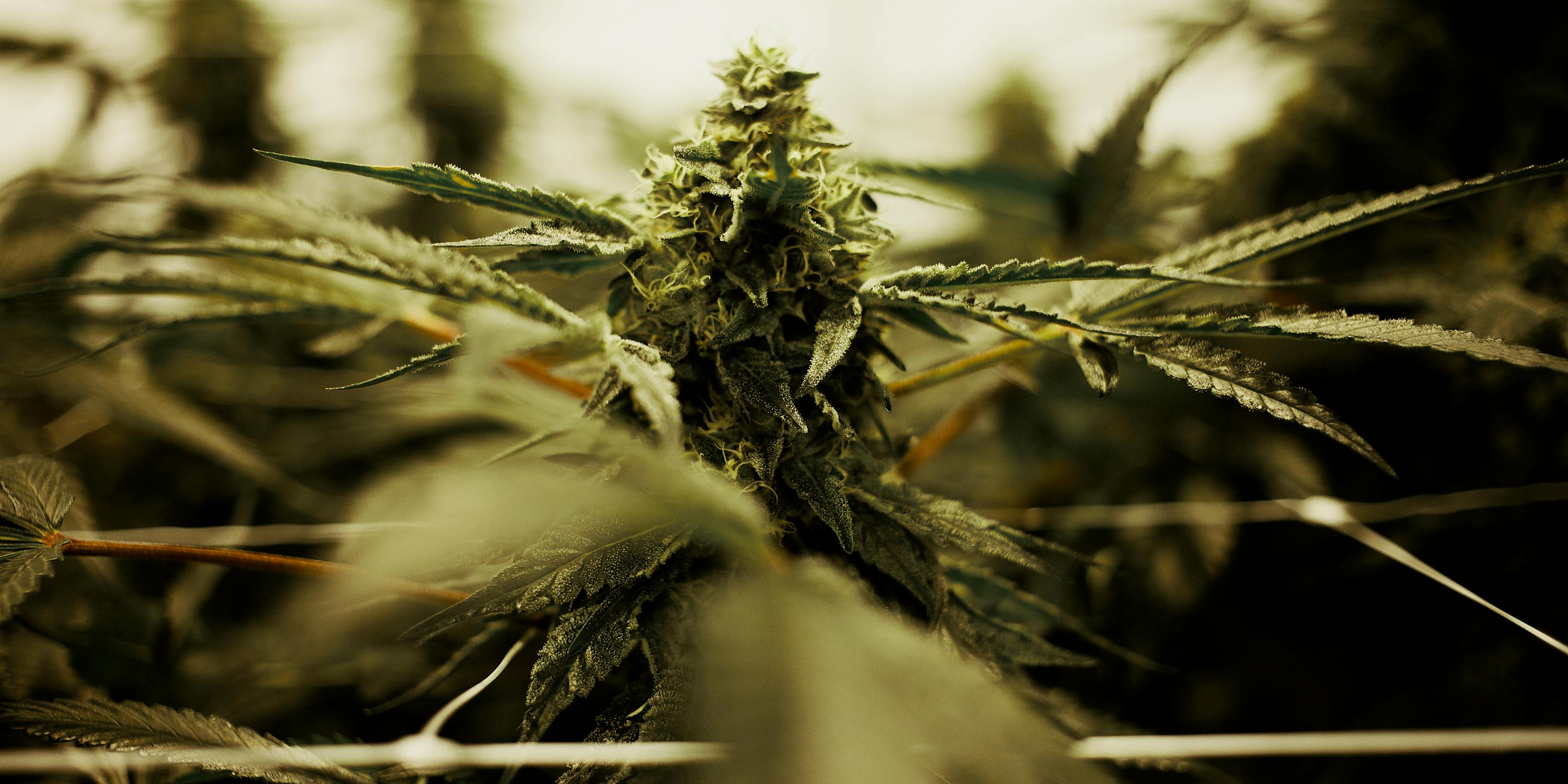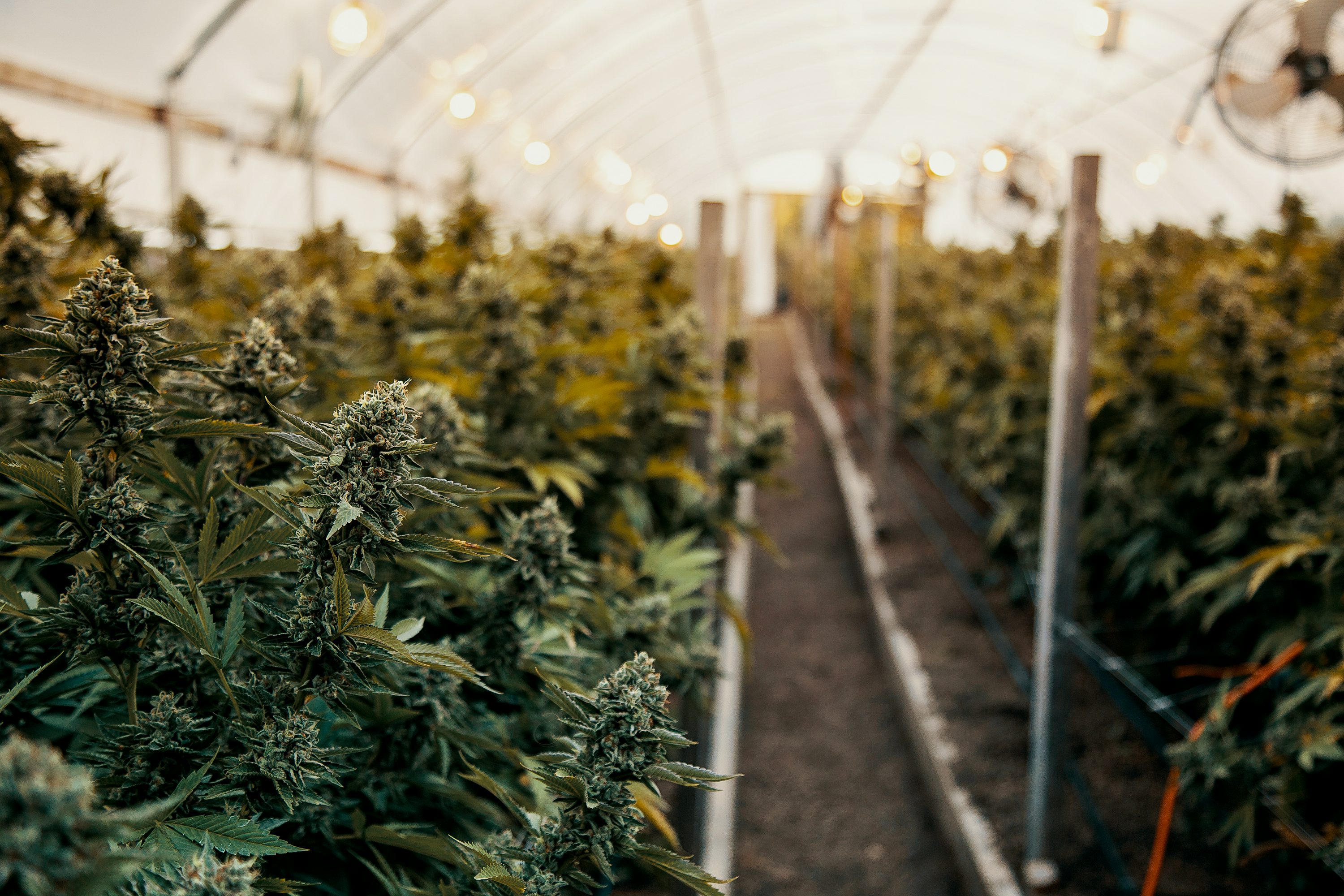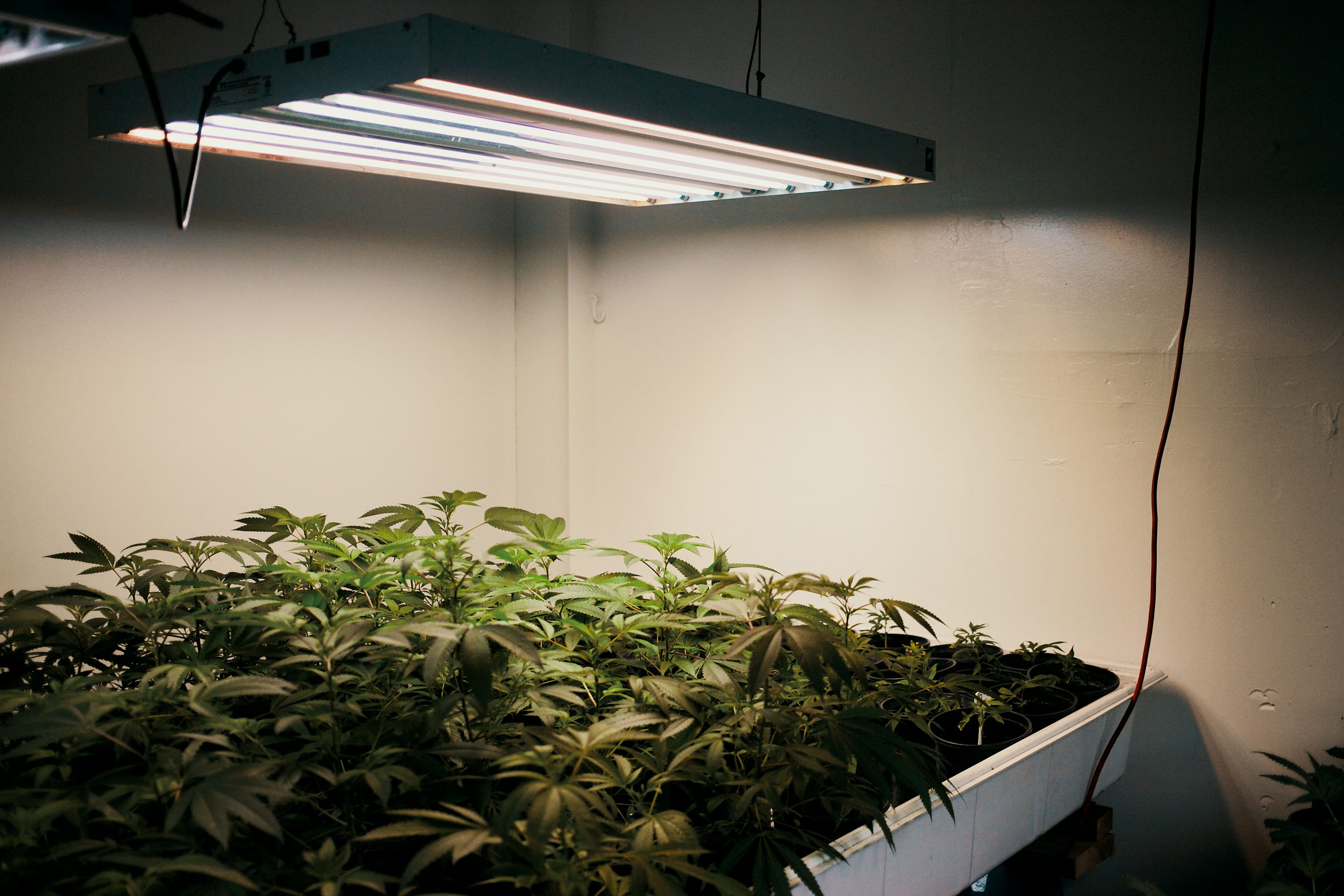
Photo by Daniel Brothers/Getty Images
Growing Indoor vs. Outdoor Weed: What’s the Difference?
If you’re thinking about starting your own grow, this is what you need to know about indoor vs. outdoor weed.
Indoor vs outdoor weed is an age-old debate in the cannabis community. Traditionally, cannabis and hemp were grown outdoors. They’re known to be resilient and hardy plants, hence their nickname: weed. Cultivation has only been predominantly indoors since the 1980s because of prohibition and the War on Drugs. However, with the rise of indoor cultivation in the past few decades, many cannabis enthusiasts believe indoor grown buds are next level. Now that legalization is sweeping the globe, we figured it was time to revisit this classic conundrum: indoor vs outdoor weed.
Indoor vs Outdoor Weed: Why Environment Matters
Growing weed indoors and outdoors each have pros and cons. The main pro of indoor cultivation is having complete control over the environment. Indoor growers can control and monitor the most important environmental factors to healthy cannabis growth: light, temperature, and humidity, as well as CO2.
Outdoors, cannabis plants are exposed to the elements. Too much or too little heat, humidity, rain and wind could mean life or death for an outdoor cannabis garden. However, there are also benefits to growing outdoors, like natural predators that will help your plants fight off pests. For instance, ladybugs in nature help to deter spider mites, which could pose a serious threat to your plants.
The third option that marries the best qualities of both indoor and outdoor cannabis cultivation is greenhouse growing. Greenhouses provide plants with natural light while protecting them from the elements.
Outdoor and Greenhouse vs Indoor Quality: Is There a Difference?
Conventional cannabis wisdom would have you believe that indoor grown cannabis is superior in terms of quality. While the controlled environment does allow growers to cultivate more finely manicured buds than their outdoor grown counterparts, that’s not everything.
Craft “sun-grown” cannabis companies are popping up in states where cannabis is legal and there’s a natural environment that is good for growing bud. In fact, places like the Emerald Triangle, California and Willamette Valley, Oregon have habitats that can enhance the plant’s natural terpenes and cannabinoids, making for unique, flavorful and potent buds. Plus, no indoor lights can compete with the benefits plants receive from growing in the full light spectrum of the sun.
That being said, the level of control indoor grows permit allow cultivators to apply techniques that can boost bud size, as well as terpene and cannabinoid production. For instance, supplementing indoor plants with CO2 at crucial times during the plant’s life cycle can help increase the flower size.

Indoor vs Outdoor Weed Price: What’s More Cost Effective?
Starting a cannabis grow, outdoors or indoors, is an investment up front, but growing cannabis outdoors is definitely cheaper in the long run. Indoor grows are more expensive for two main reasons: they require more equipment and they require more energy. The electricity needed to power grow lights and climate control tools, like fans and air conditioners, can be very high. While it’ll depend on energy costs in your area and the size of your grow room, this cost can seriously add up as time goes on.
Outdoor grows, on the other hand, avoid those energy costs and so end up costing a little money upfront to set up, but then being very affordable to maintain. Greenhouses are more expensive to set up than outdoor grows but are worth it if you have space. The extra protection they’ll give your plants will increase your bud’s quality, making it more valuable.
The only downside to outdoor grows is, in many areas, you can only grow once per year. With indoor grows, cultivators can grow and harvest weed continuously, all year round. However, in some places you can also cultivate cannabis outdoors all year round, like in Colombia, which has the ideal climate and 12 hours of dark and light all year round. So it will really depend on where you plan on setting up your garden.
Sustainable Cannabis Growing: Is Indoor or Outdoor Weed Better for the Environment?
Outdoor grown weed is definitely better for the environment. With little need for electricity, it has a much smaller carbon footprint than indoor grown bud. Indoor plants require lights for 12 to 18 hours per day, fans, climate controls, and potentially more energy-sucking tools depending on the garden.
Outdoor and greenhouse grown cannabis is much better for the environment, and there are some ways to make it even more sustainable. For instance, in California, some farmers are experimenting with saving rainwater to hydrate their plants or practicing other sustainable techniques, like dry farming.
However, some outdoor black market grows are also harming the environment by leaking unregulated pesticides and other chemicals into local groundwater. This practice has, in part, inspired a bunch of “organic” craft cannabis farms to start popping up on the West Coast of the U.S. That’s why, even if you’re growing weed outdoors, you still need to take sustainable and environmentally-friendly practices into consideration.

Indoor vs Outdoor Weed Effort: Which is Easier?
Let’s be honest, if this is your first time growing, neither indoor nor outdoor weed is going to be easy. But if you have space outside, a few outdoor plants are going to be less effort overall than an indoor grow.
Outdoor plants will require more trimming and you’ll have to sweat any storms or other environmental factors beyond your control, but in general, nature will take care of a lot more for you outside than inside. That’s because outdoor-grown cannabis plants are tougher and more resilient to diseases. Plus, other natural factors are working in your favor, like light and natural predators. With an indoor grow, you’ll need to be constantly monitoring your grow room’s temperature, humidity, and light quality while also checking daily for pests or diseases, both of which are more likely to occur indoors.
Indoor vs Outdoor Weed Time: Which is Faster?
If time is your biggest concern, you may want to consider starting an indoor grow. Generally, cannabis plants take a bit longer to grow outside than inside. It’s mostly because the plants are following their natural rhythm and developing according to the time of year. Because you control every aspect of your indoor grow room, you also control the seasons, and therefore, the plant’s life cycle. That means you can decide when to change the lighting schedule to induce flowering, and that also means having more control over your timeline.
However, even though outdoor plants may take longer to grow, they’ll also likely grow larger than indoor plants and often produce higher yields. So again, when it comes to indoor vs outdoor weed, there’s pros and cons to both. What’s best for you will really depend on your resources and needs.
Let us know how your cannabis grow is going in a comment below.
Herb Recommended Products:
READ MORE










